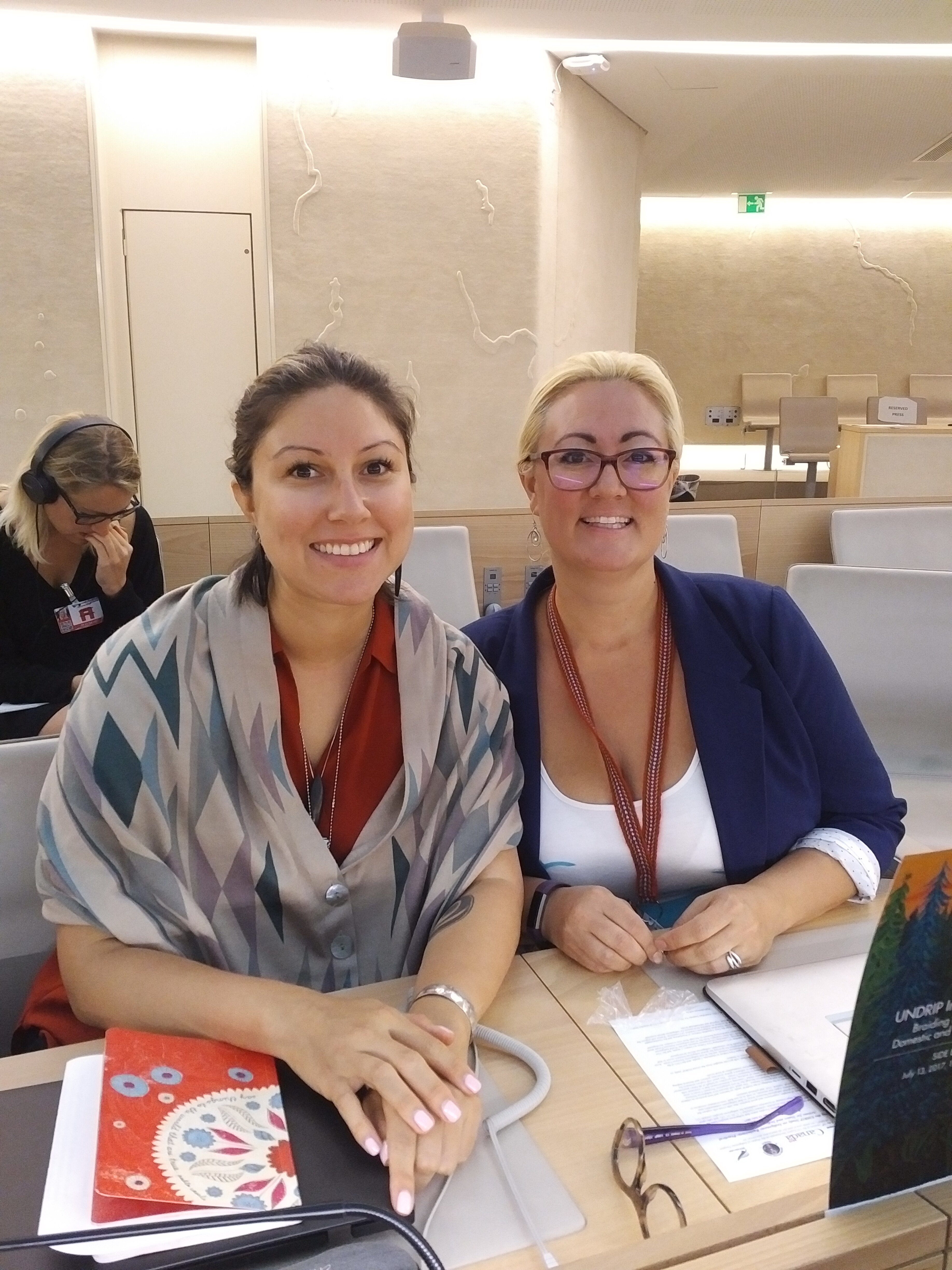UN Declaration on the Rights of Indigenous Peoples: Is Canada living up to its commitment?
We interviewed Christina Gray, an expert who specializes in Canadian Indigenous law, to find out.

This year marks one decade since the United Nations adopted its Declaration on the Right of Indigenous Peoples (UNDRIP), a universal framework that encourages the international community to treat Indigenous people with dignity and respect — but it’s only been one year since Canada fully supported it. Now, Canadians are waiting to see if meaningful implementation of the declaration will take place, with some saying a lot of work still lies ahead.
Last month, experts and stakeholders focused on Indigenous issues met at the UN’s annual session for the Expert Mechanism on the Rights of Indigenous Peoples (EMRIP) in Geneva. Established by the United Nations Human Rights Council, EMRIP is a body of seven independent experts that provides advice on achieving UNDRIP’s goals.
Among the experts was Christina Gray, a senior research associate for the Waterloo-based Centre for International Governance Innovation (CIGI). Gray, who specializes in Canadian Indigenous law, gave a speech on behalf of her CIGI delegation about UNDRIP’s implementation over the past 10 years. During her presentation, Gray — who identifies as Tsimshian, Dene and Métis — emphasized the need to draw on Indigenous laws and language to successfully carry out UNDRIP.
I interviewed Gray about what the UN Declaration on the Right of Indigenous Peoples means for Canadians and whether enforcing it is even possible.
Q&A with Christina Gray
Anya Zoledziowski: Why should Canadians care about UNDRIP?
Christina Gray: I think that all Canadians should care about the UN Declaration on the Rights of Indigenous People because it has the potential to affect all Canadian people. Canada benefits from being a diverse nation full of many different languages and cultures. UNDRIP implementation could only make Canada a more rich place to live.
It was adopted by the United Nations in 2007; how has Canada been performing over the last decade?
I think it was just last year in New York that Carolyn Bennett, the minister of Indigenous and Northern Affairs, said that we were going to implement it. For a long time, Canada didn’t sign onto it. We will have to wait and see how it’s going to be implemented. They’re just at the early stages of that discussion.
One of the things that I’m really trying to understand is how we actually put this into place. Politicians like Prime Minister Justin Trudeau and B.C. Premier John Horgan say they support UNDRIP, but who’s going to make sure that they keep their promises to Indigenous communities?
I know when Justin Trudeau was running for prime minister, part of his platform was saying that the Liberals were going to implement UNDRIP. I think one issue around international law is that it has to be implemented through Canadian laws; we have to legislate it into existence for it to be part of Canadian law. I think that one way that Justin Trudeau or John Horgan can be accountable to their election promises is by actually legislating UNDRIP into the legislative framework of Canada.
Does the United Nations have any mechanisms that can enforce it?
It’s seen as a non-binding agreement. It’s not like when there is a war crime, for example, where countries are held accountable for the harm done against their people. UNDRIP doesn’t exactly operate in the same way. I think the short of it is that people can bring their issues to the United Nations EMRIP, but they’re not held accountable in the same way that you’re thinking about it.
Can you explain what non-binding means?
Non-binding means that it’s not enforceable in domestic law. So the agreement becomes enforceable when it’s legislated through domestic law.
What would successful implementation of UNDRIP look like in Canada?
For me, I think UNDRIP is like the Charter of Rights and Freedoms. It’s a document that seeks to protect people’s rights, and in this case, Indigenous people’s rights. We’ve seen throughout the last 150 years how harmful Canadian laws can affect Indigenous people. So it’s good to counter that with a document like UNDRIP that seeks to protect important issues like language, oral tradition and, for example, laws. I see it operating separately and distinctly, like the Charter.
What are the next steps that Canadians need to take, going forward, with the declaration?
There is one great example of what Canadians can do: They can write their MPs in support of implementing UNDRIP in Canada. I think a lot of people don’t know what it is and don’t see it as being important in Canada, so I think it’s also about building more awareness of what exactly UNDRIP is. A few years ago, no one was talking about residential schools in Canada, and then we had the Truth and Reconciliation Commission and its Calls to Action. I think people can start there, at least, looking at the TRC’s Call to Action to start implementing UNDRIP.
This interview was edited for length and clarity.
